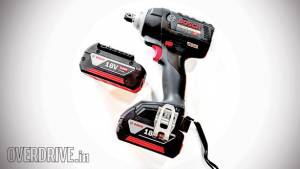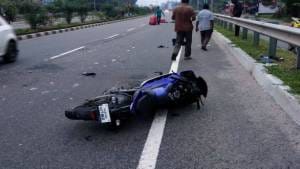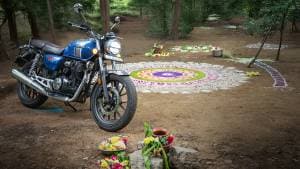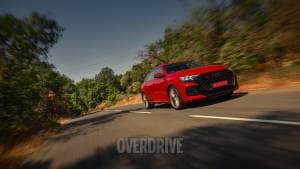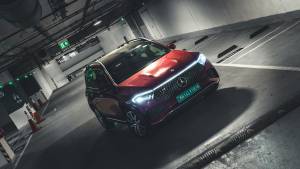In conversation with Kartikeya Joshi, head of marketing and sales, Bosch Chassis Systems India Ltd.
Parking assist systems have been a boon ever since they were first introduced. The first generation existed in the form of sensors on the surface of the car, emitting audible "beeps" of increasing frequency as the car gets closer to an obstacle. Shortly after that, the sensors were paired with a reverse camera which made parking easy on the neck muscle by displaying the feed on the infotainment screen. From then on, the systems have become so advanced that all was left to be done was make it an automated process. In an exclusive email interaction with OVERDRIVE, Kartikeya Joshi, head of marketing and sales, Bosch Chassis Systems India Ltd., shares how Bosch is taking things one step further with plans to introduce "connected" and "remote" parking which essentially makes parking a "zero human intervention" affair.
OVERDRIVE: What parking assist systems does Bosch currently offer in India? Could you explain each one in brief?
KJ: The parking systems available in India can be classified based on the sensor used as well as on systems' functionality. Based on the sensor used, we have ultrasonic sensor-based systems (USS), rear-view camera based system (RVC) or a system that uses combination of both. With a detection range of 2.5m to 5m, the USS is very efficient is providing park assist under low-speed conditions while backing the car. The basic system is a four-channel system (four USS sensors) mounted on the bumper of the car. RVC with a detection range of 15m can also help the driver manoeuvre out of a tight spot while backing up. Bosch offers both sensors as part of its portfolio. In addition, Bosch systems has features like dynamic overlay (overlaying the steering input on RVC image) and range seek (overlaying distance info on camera image) to extensively improve the capabilities of basic parking aid. These basic parking aids are now available in compact cars, and we expect that the installation rates of these systems will rise very fast in the next three to four years.
For mid-segment cars, there are eight-channel systems (eight USS sensors) which is becoming more popular now. In addition to providing help while backing the car, these additional four USS sensors mounted in the front can also help in drive off scenarios from tight parking spots where the driver has to avoid a pole or another car.
For premium cars, there are 10-12 channel systems. These systems provide premium park assist features which are possible and available also on premium cars in India. One example is the Park Steering Control (PSC) feature by Bosch. This feature gets realized when USS, electronic power steering, Electronic Stability Programme (ESP) and automatic transmission system work together. The system allows the driver to easily do the parallel parking (pull-in and pull-out). The driver sits inside the car and gives signal to initiate the PSC through the use of indicator. The system amazingly does the rest.
OD: In what way are these parking assist systems scalable?
KJ: Imagine an OEM with a product range from compact hatchback, mid-segment sedan and SUV. Bosch can offer the complete suite of scalable hardware (from four-channel USS system to 12-channel USS system) and scalable functional capability (from basic park assist to PSC). Install RVC into the vehicle platform and more convenient features like dynamic overlay could be realized. The OEM can offer these differentiated features across its product lines in a scalable fashion. The scalability offered by such system not only optimizes the development time but also gives the OEM a lot of flexibility to design its product strategies.
While growing up, I often noticed that the unsaid responsibility of the co-driver is to step out of the car and instruct the driver (through hand gestures) how much to back and how far under challenging parking situations. The scalable parking solutions by Bosch not only give the co-driver a chance to relax but also enable the driver to manoeuvre all challenging parking situations. This ensures safe, agile and comfortable driving which is also the main objective of Bosch while bringing these technologies to market.
OD: We've heard that connected and automated parking is becoming a reality in the European countries. Are there any plans for bringing it to India?
KJ: Parking automation is a stepwise approach. If we think clearly, we will realize that basic park assist is already the first step towards parking automation. We have made sure that even a new driver can park like a pro, and that is the first step towards automation. The second step is a combination of systems delivering automation under complex parking situation. PSC system from Bosch is one such example. Parallel and perpendicular parking could be negotiated with minimal driver control. As per Bosch assessment, the first two steps are already relevant for Indian market and increasingly OEMs are planning the implementation of first two steps.
The third step of automation is "remote parking". In this scenario, the driver steps out of the car and through a mobile "connected" app asks the car to park itself. Bosch has these systems in its portfolio, and they are gaining popularity in developed market. We think that the third step will take still some years in India to materialize.
The last step in parking automation is fully automatic parking. This involves no supervision by driver, and the car using active communication with infrastructure is able to park itself under all possible parking scenarios. These systems require a high dependency on car to infrastructure communication and hence will be more complex to implement. We, at Bosch, are working with different OEMs worldwide to bring these features to market.

